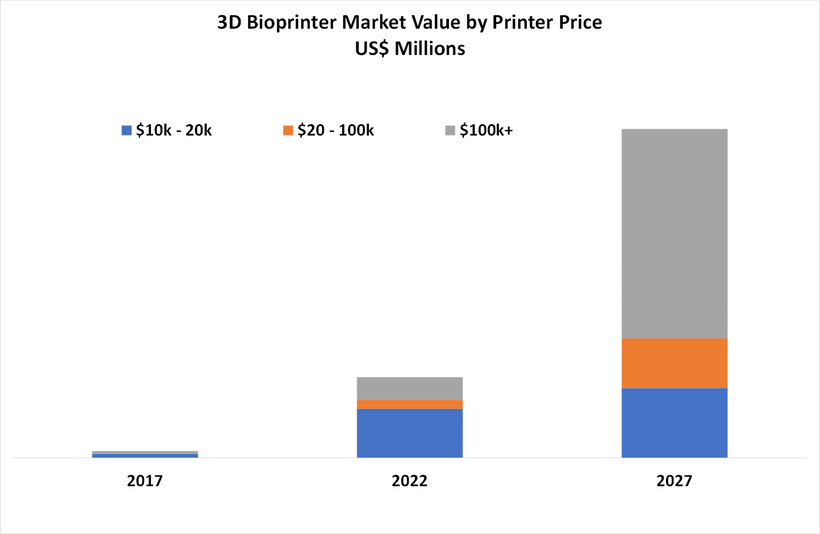The idea of providing solutions for regenerative by way of fabricating organs for transplant, in product development and/or testing trigger investments in 3D bioprinting companies, start-ups and even subsidiaries. Also, some of these specialized companies already knew a doubling of revenue and comparable results can already be outlined for the next few years.
With regards to these trends, Nadia Tsao’s report (Technology Analyst at IDTechEX) predicts the market will reach $1.8 billion by 2027. Taking into account that 3D bioprinting is the “deposition of living cells in a spatially controlled manner in the absence of any pre-existing scaffold and in more than a single layer”, the researcher brings out four main printhead technologies: Inkjet, Extrusion, Laser-induced forward transfer and Microvalve.

Applications for 3D Bioprinting include testing of cosmetics and other consumer goods, drug screening, personalised medicine, regenerative medicine, cell-based biosensors, food and other animal products, education, academic research as well as bionics.
However, as far as regenerative medicine is concerned, Bioprinting 3D technology forecasts a highest impact on this field. It can be specifically applied on tissues such as bone and cartilage, skin, dental, vasculature and complex organs.
Detailed forecasts of every 3D bioprinted tissue can be found here.
For further information about 3D Printing, follow us on our social networks and subscribe to our newsletter!






